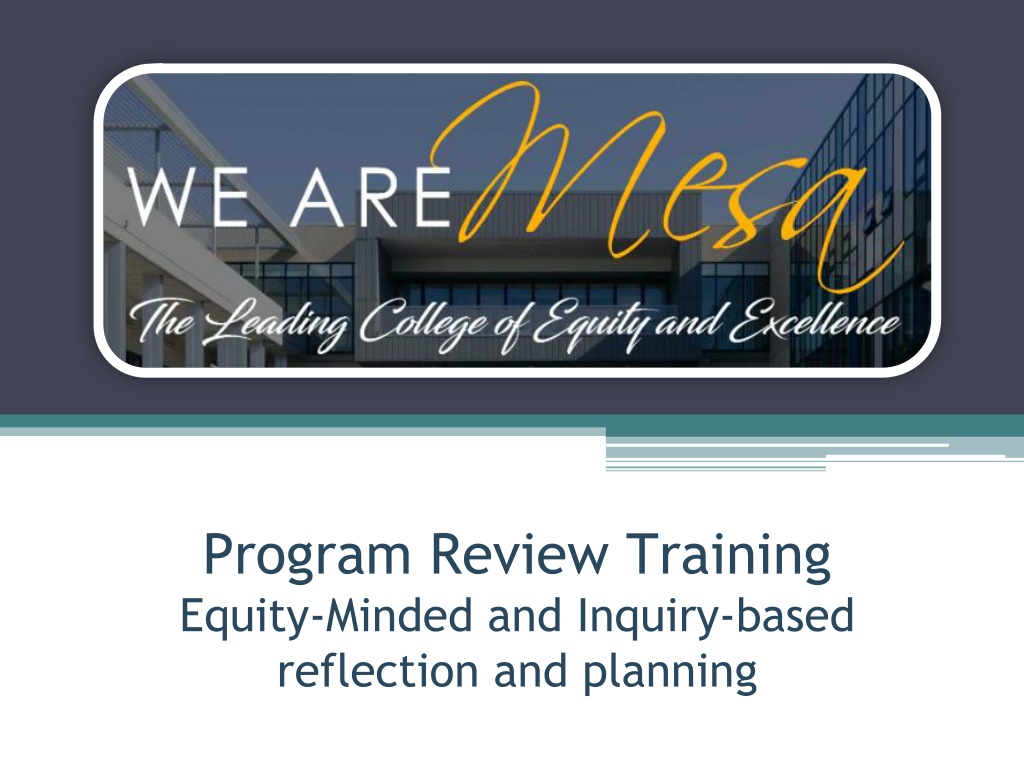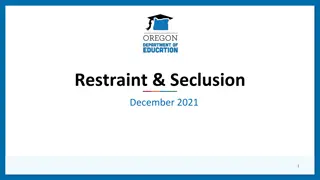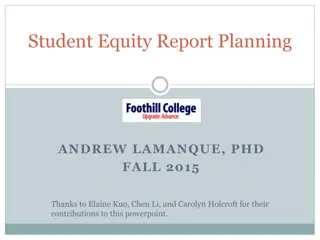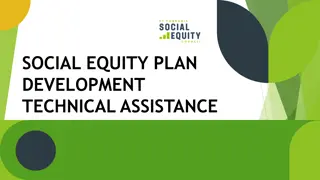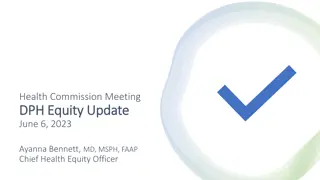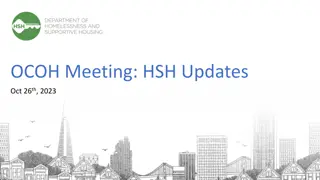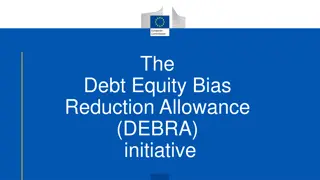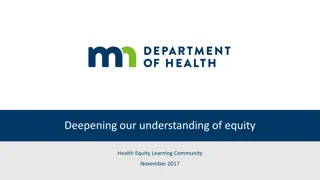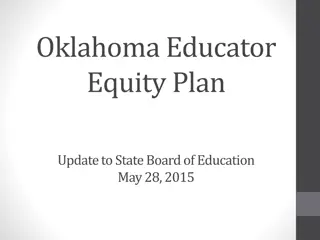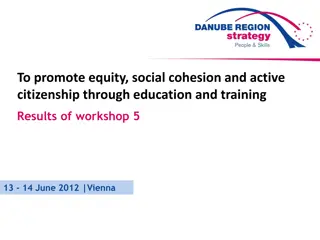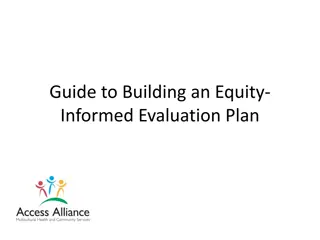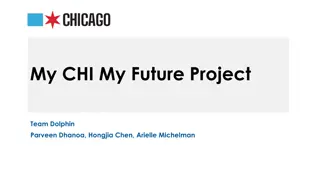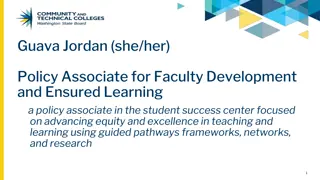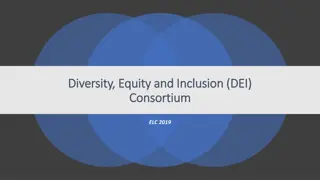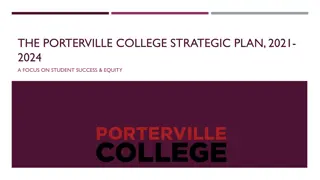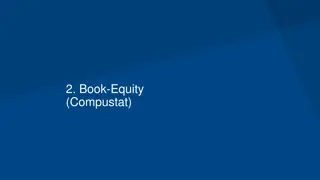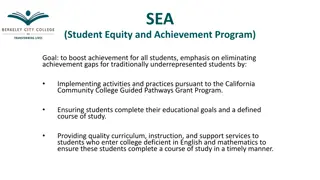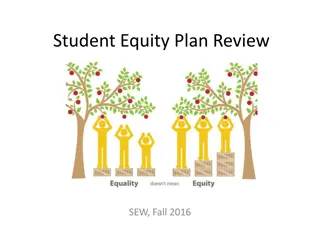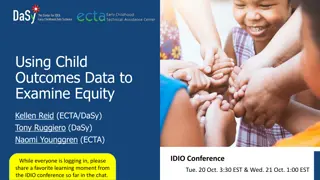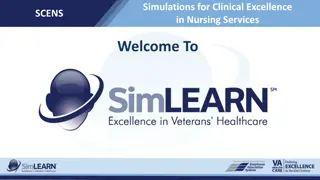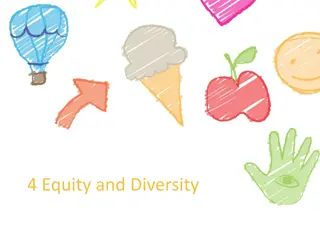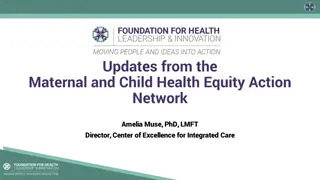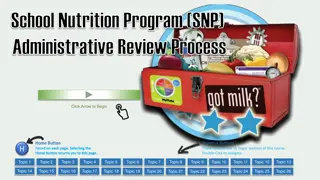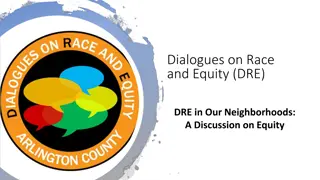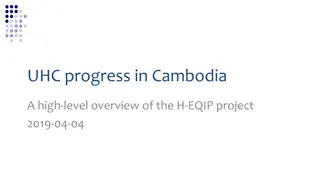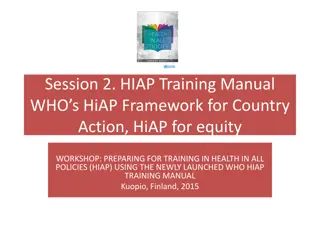Program Review for Equity and Excellence: Analysis and Planning
This program review training focuses on equity-minded and inquiry-based reflection and planning to enhance institutional effectiveness, research, and planning. Participants will explore strategies for identifying patterns and trends in data to address equity gaps, contributing to the college's identity as a Hispanic Serving Institution. The session aims to analyze program success metrics, explore resource needs, and develop new goals based on findings.
Download Presentation

Please find below an Image/Link to download the presentation.
The content on the website is provided AS IS for your information and personal use only. It may not be sold, licensed, or shared on other websites without obtaining consent from the author. Download presentation by click this link. If you encounter any issues during the download, it is possible that the publisher has removed the file from their server.
E N D
Presentation Transcript
Program Review Training Equity-Minded and Inquiry-based reflection and planning
Vision for Institutional Effectiveness, Research, and Planning To Be The Leading College Of Equity And Excellence by inspiring a culture of equity-minded action research, reflection, and inquiry
What do you hope to get from today s session?
Objectives Review Analysis for Equity and Excellence Section of Taskstream Review Data Dashboards Review additional resources available for inquiry-based reflection Discuss strategies for identifying patterns and trends in data Additional things you d like to know
0 0 Part A: In this section, please analyze your program in terms of course success metric. Start by disaggregating the available data by race, gender, and any other parameters of interest to your program and answer the following questions. A1. What patterns do you notice with regard to equity in course success at the program level by race/ethnicity? A2. Do these patterns persist over time (e.g., look at the last five years)? Describe if equity gaps are increasing, decreasing, or staying the same? A3. What factors may have influenced these results? What are your most significant findings? A4. How have you/might you alter practices to increase student success and reduce equity gaps? A5. How does your program contribute to the College's identity of being a Hispanic Serving Institution? A6. Have you identified resource needs? If yes, please list. A7. Do any of your program goals address these implications or needs? If not, please develop a new goal that addresses your findings and subsequent reflection.
Components of a dashboard Introductory Page Tabs Across the top Filters Reference lines Info Buttons Equity Gap Analysis Updated On: Notes
External Resources Tool and Resources Link to IR Website SDCCD IR Research Reports Awards Misc. Student Profiles Enrollment/FTES Statewide Data Sources DataMart CTE Launchboard Cal-PASS Plus O*NET
Considerations 1. Understand the definitions and nuances of your data 2. Develop guiding questions and hypotheses 3. Looking for patterns/trends Across time Across/between groups Across other characteristics (course level/modality, etc.) Between datasets 4. Looking at outliers/anomalies 5. Infer meaning, draw conclusions, ask more questions
0 0 Part A: In this section, please analyze your program in terms of course success metric. Start by disaggregating the available data by race, gender, and any other parameters of interest to your program and answer the following questions. A1. What patterns do you notice with regard to equity in course success at the program level by race/ethnicity? A2. Do these patterns persist over time (e.g., look at the last five years)? Describe if equity gaps are increasing, decreasing, or staying the same? A3. What factors may have influenced these results? What are your most significant findings? A4. How have you/might you alter practices to increase student success and reduce equity gaps? A5. How does your program contribute to the College's identity of being a Hispanic Serving Institution? A6. Have you identified resource needs? If yes, please list. A7. Do any of your program goals address these implications or needs? If not, please develop a new goal that addresses your findings and subsequent reflection.
Think Pair Share A1-8 minutes
Action Planning and Areas of Focus Connect plans to analysis Analysis identifies equity gap for Latinx students in a specific gateway course Action plan seeks to develop the faculty who teach that course, include culturally relevant materials into the course curriculum, embed tutors, etc. Create goals to support this Leverage existing programs and resources
Parting thoughts We are not seeking TRUTH just one of many truths Dozens of variables influence student success but pervasive and persistent patterns can be compelling places to begin our work Don t get trapped in false dichotomies Data and assessment are inextricably linked to a culture that values effective pedagogy and andragogy Student success data is, ideally, learning centered.
Inquiry is a change strategy, become a researcher of your own practice -E.Bensimon You don t need data to maintain the status quo.
The Team Office: A-109 Phone: 2509 Bridget Herrin, Acting Dean Hai Hoang, Analyst Kyung Ae Jun, Analyst Nancy Cortes, Analyst Anda McComb, Admin Tech Mona King, Sr. Secretary
